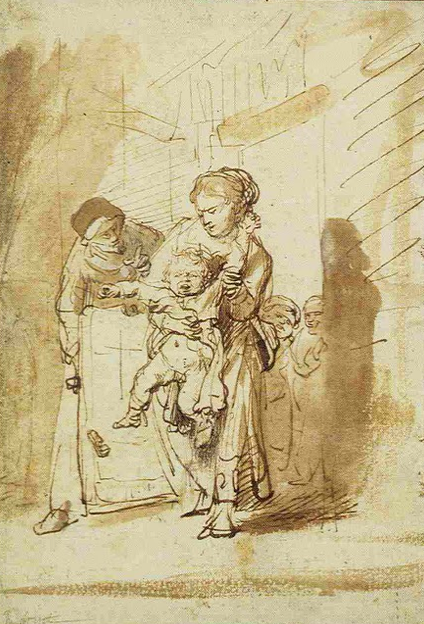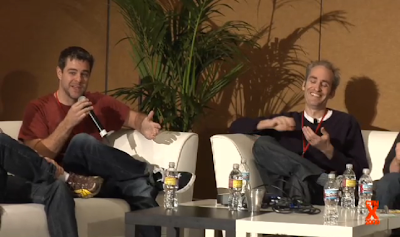(sketch by Rembrandt)
Derek Thompson: The willingness of a story artist to dispose of their work, of their thinking, is almost equally important as their ability to draw, really, really well. […] That’s where process comes into play. Most artists that I know enjoy looking at rough, unfinished work. For any of you who think we’re doing inked finished typed boards — that’s not what it is. It’s dirty, it’s roll up your sleeves — it’s wet works in the plumbing, it’s really gritty, type of work. “Get in late, get out early.”
Ted Mathot: I generally do all my posing last, so, I’ll go in and I’ll try to nail down each shot. And get my progression of shots going first. So I’ll have one drawing for each shot — then I’ll go back in and start plussing.
Bill Pressing: I try to do a minimum of three boards for a shot. Cause a lot of times you can do whatever you’re thinking of doing in three. [Thompson: “A beginning, middle, end — an A, B, C — where you’re in, in the shot, what the middle substance is, then how you exit the shot.]
Scott Morse: It’s neat to see how the rule of three works. I’m kind of a nerd about patterns these days, fractal geometry — I love finding patterns in things. Obviously in film there’s a three act structure — because it works, not because it is a “rule” that we stick to because, you know….” “Be prepared to do it, then have it thrown out.” A lot of people ask, “What kind of style do you look for?” — and it’s like, “ok, that’s a big red flag that you just threw it in my face,” ’cause a style isn’t gonna come across in storyboarding. Your drawing style needs to be — not a style. It needs to be a thinking style. You need to be able to work, play, well with others. [Mathot: You need to be adaptable in that you can draw like other artists around you. But you also have to be able to adapt to the other directors, because they all have styles too, and you need to be able to work with that.]


